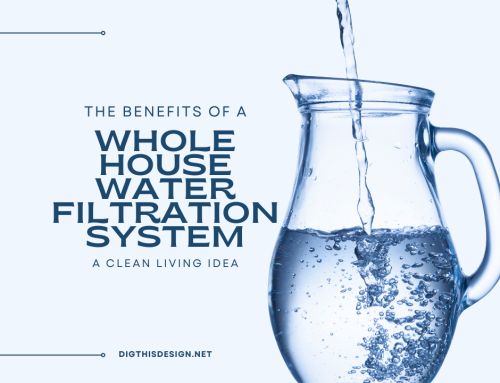The push for alternative energy sources has been in the making since at least the 1970s, and it did take about two decades to really catch on in the U.S. However, by the late 1990s, the first reliable consumer industries began to appear and make headway, particularly in building solar panels and the automotive industry. It is now some 25 years later, and many of those same car batteries and solar panels are dying out, piling up under industrial waste piles and being removed from service entirely. Many environmental watchdogs and production critics have been afraid the same is quickly creating a new toxic problem. In reality, however, industrial recycling has become a solution as well.
Batteries and Solar Panels, Good for the Environment?

Recycling Alternative Energy Waste
Most industrial material is made up of three components: metals, plastics, and chemicals. Organic materials are nowadays actually fairly rare. While the manufactured material in its final form has a limited lifespan, that doesn’t mean that the integrated components in the product automatically become useless as well. They instead just need to be removed and re-purposed again. This is the case with industrial batteries and solar panels in particular. Batteries include both plastics and metals that can be drained and cleaned out. Solar panels are a combination of circuitry, glass, metals, and plastics. Stripped apart properly, both “junk” materials can actually produce a sizable amount of recyclable, usable resources.
However, not everyone is automatically prepared to properly dispose of the coming increase created by the switch to alternative energy modes. And that can create sudden gluts of by-products and toxic waste that has to be handled correctly. Sending the same to landfills only makes matters worse as the chemicals on those materials seep into groundwater tables. Instead, using the services of professional recyclers like Corridor Recycling and others provides a viable, effective redirection of battery and panel waste without toxic damage.
Repurposing the Materials of the Batteries and Solar Panels
The alternative energy industry also isn’t turning out to be the endless goldmine expected; there’s a cost to its power production as well. Just like anything else mass-produced, the industry depends on a steady supply of key materials to keep manufacturing new units.
Batteries, for example, rely heavily on lithium. EV car batteries represent the biggest recent consumer of it, and 90% of the global supply comes from three countries – Australia, Canada, and China. However, the last one makes up one-third of consumption of the same material in 2023. Recovering lithium in a manner where it can be re-used is becoming a top priority garnering serious government-funded research.
Solar panels are primarily aluminum, copper, and glass. All three materials are in high demand and easily can be used again if recovered properly. For example, copper is already under significant pressure for increased wiring and circuitry needs. The lack of copper has been driving scrap metal theft for years now in the U.S.
A Critical Bridge Needed for Industry Sustainability
As both car batteries and solar panels are reaching the zenith of their initial product expiration, especially solar panels in the 20 to 30-year age range from the earliest releases, recycling is clearly going to be the answer to avoiding landfill messes and toxic cleanups. The availability of professional recycling services that can connect businesses collecting and removing old products to processing resources in recovery harvesting will dictate how well both industries can avoid manufacturing shortages. That in turn will impact their long-term success or functional failure going forward.
Conclusion
In the quest for cleaner and more sustainable energy sources, the alternative energy industry has made significant strides over the past few decades. Solar panels and batteries, once heralded as the future of green energy, are now facing the challenge of disposal and recycling as they reach the end of their lifespan. However, the good news is that recycling has emerged as a viable solution to manage the mounting waste generated by these technologies.
Industrial recycling has become a crucial element in addressing the growing piles of discarded solar panels and batteries. These products may have a limited lifespan, but the materials within them, including metals, plastics, and chemicals, still hold value. Properly dismantled and processed, these seemingly useless items can yield recyclable and reusable resources.
Yet, as the transition to alternative energy modes accelerates, not everyone is equipped to handle the disposal of these materials correctly. Improper disposal can lead to toxic waste and environmental damage, making professional recycling services an essential part of the solution.
Moreover, the alternative energy industry faces its own sustainability challenges. The production of batteries relies heavily on materials like lithium, which must be recovered and reused to meet growing demand. Similarly, solar panels contain valuable materials such as aluminum, copper, and glass that can alleviate pressure on resource scarcity.
In essence, the recycling of solar panels and batteries is the bridge needed for the long-term sustainability of these industries. As these products near the end of their initial lifespan, recycling will play a pivotal role in preventing landfill pollution and toxic cleanups. The availability of professional recycling services, facilitating the seamless transition from collection to processing, will determine the success or failure of these industries in the future.
In a world increasingly focused on eco-friendliness and resource conservation, recycling has become an indispensable component of the alternative energy sector. It not only helps manage waste but also contributes to the sustainability of these industries, ensuring a cleaner and greener energy future.
Other posts you might enjoy:
Green Home Farming Tips: Solar-Powered Home Farms, Sustainable Netting, and More





